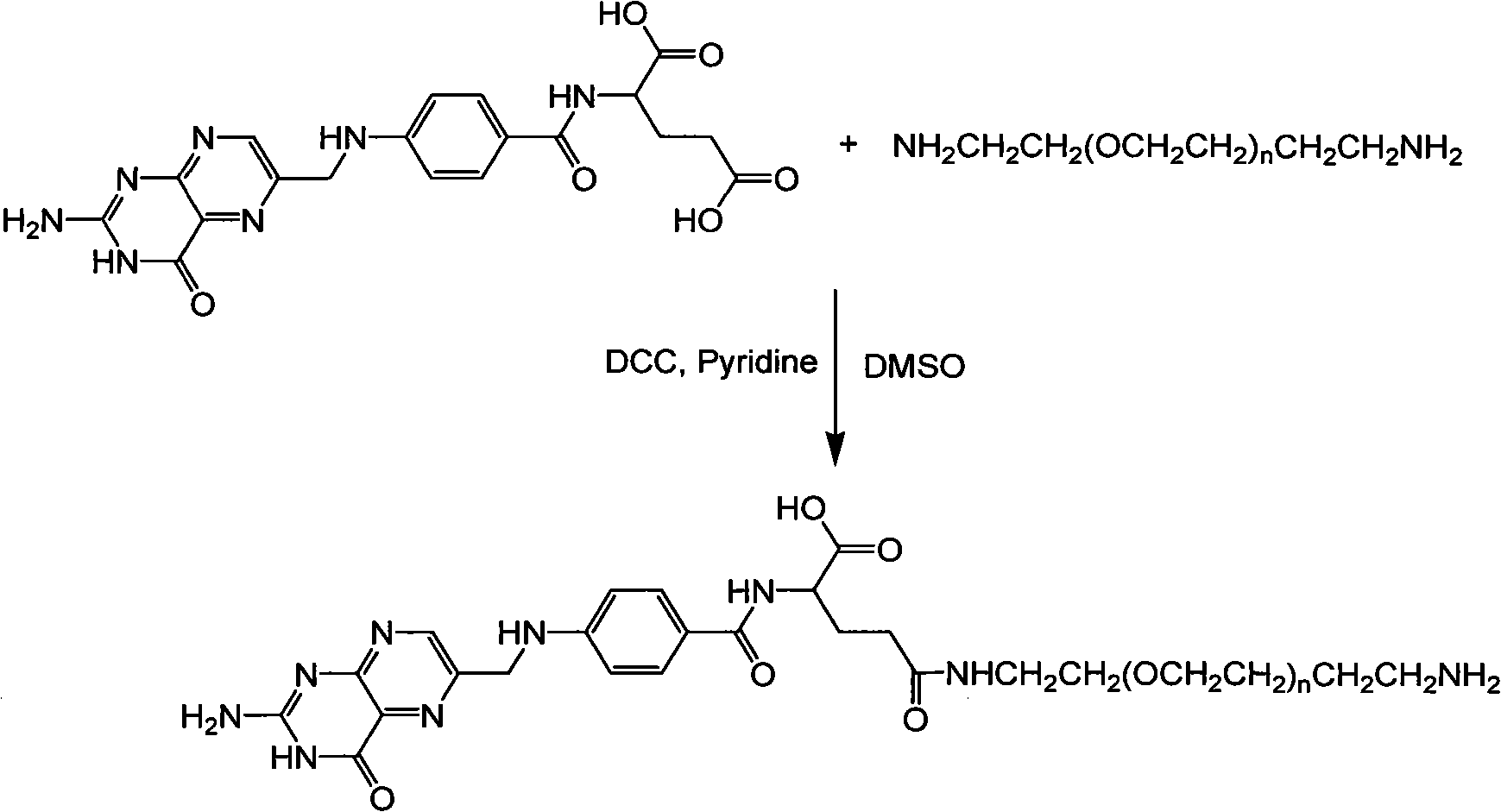Production method of probe molecule for recognizing tumor cell by specificity
A technology of tumor cells and probe molecules, which is applied in the field of nanomaterials and biology, can solve the problems of complex process, large particle size and shedding of quantum dots, and achieve the effect of improving stability, low toxicity and good biocompatibility
- Summary
- Abstract
- Description
- Claims
- Application Information
AI Technical Summary
Problems solved by technology
Method used
Image
Examples
Embodiment 1
[0028] Embodiment 1: polyethylene glycol-folic acid (NH 2 -PEG-FA) Synthesis 1
[0029] Equimolar folic acid and polyethylene glycol with amino groups on both sides are dissolved in DMSO, then N, N'-dicyclohexylcarboimide (DCC) is added in an equimolar amount with polyethylene glycol-folic acid, and Add triethylamine in an equimolar amount to polyethylene glycol-folic acid, and react at room temperature for 3 hours. After the mixed solution was centrifuged, the supernatant was dialyzed against a pH=6 buffer solution, and then dialyzed against deionized water. After removal of the solvent, a pale yellow solid was obtained.
Embodiment 2
[0030] Embodiment 2: polyethylene glycol-folic acid (NH 2 -PEG-FA) Synthesis 2
[0031] Equimolar folic acid and polyethylene glycol with amino groups on both sides are dissolved in DMSO, then N, N'-dicyclohexylcarboimide (DCC) is added in an equimolar amount with polyethylene glycol-folic acid, and Add triethylamine in an equimolar amount to polyethylene glycol-folic acid, and react at room temperature for 6 hours. After the mixed solution was centrifuged, the supernatant was dialyzed against a pH=9 buffer solution, and then dialyzed against deionized water. After removal of the solvent, a pale yellow solid was obtained.
Embodiment 3
[0032] Embodiment 3: polyethylene glycol-folic acid (NH 2 -PEG-FA) Synthesis 3
[0033] Equimolar folic acid and polyethylene glycol with amino groups on both sides are dissolved in DFM, then N, N'-dicyclohexylcarboimide (DCC) is added in an equimolar amount to polyethylene glycol-folic acid, and Add triethylamine in an equimolar amount to polyethylene glycol-folic acid, and react at room temperature for 9 hours. After the mixed solution was centrifuged, the supernatant was dialyzed against a buffer solution with pH=10, and then dialyzed against deionized water. After removal of the solvent, a pale yellow solid was obtained.
PUM
 Login to View More
Login to View More Abstract
Description
Claims
Application Information
 Login to View More
Login to View More - R&D
- Intellectual Property
- Life Sciences
- Materials
- Tech Scout
- Unparalleled Data Quality
- Higher Quality Content
- 60% Fewer Hallucinations
Browse by: Latest US Patents, China's latest patents, Technical Efficacy Thesaurus, Application Domain, Technology Topic, Popular Technical Reports.
© 2025 PatSnap. All rights reserved.Legal|Privacy policy|Modern Slavery Act Transparency Statement|Sitemap|About US| Contact US: help@patsnap.com


